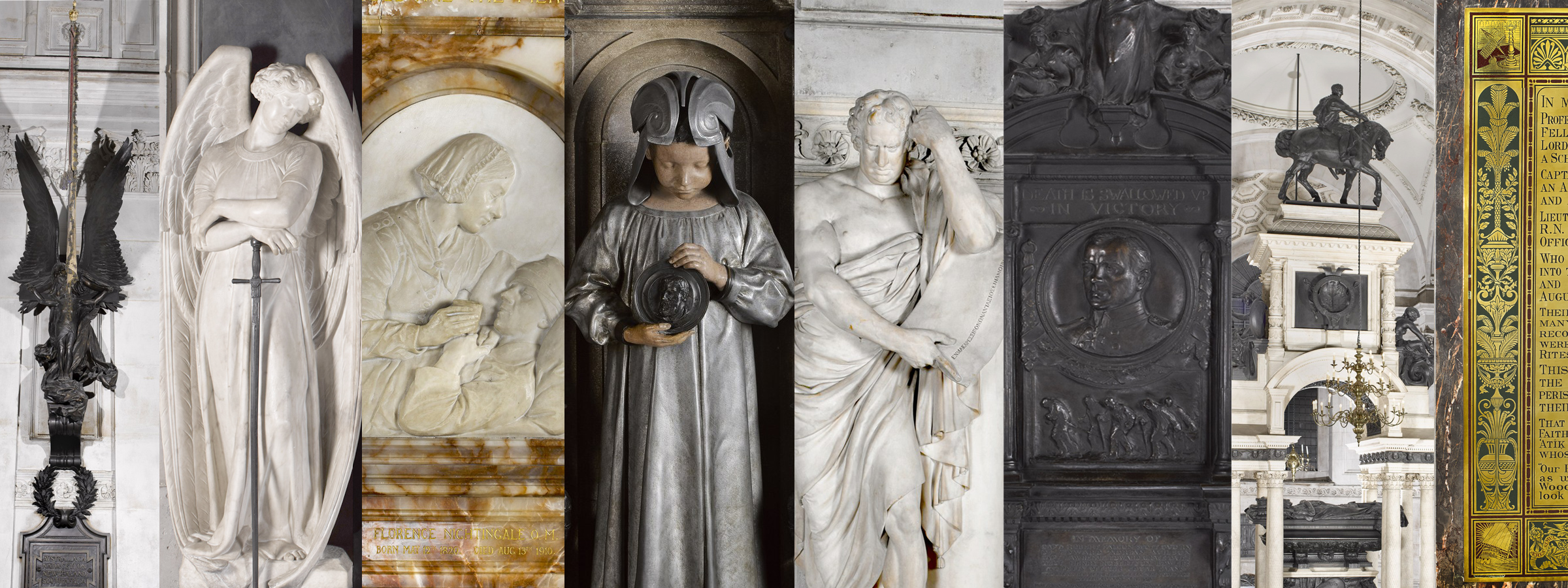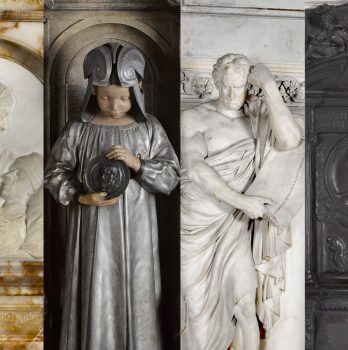‘Sir Christopher Wren’: Children’s Book Creator and Teacher Sue Wallace’s Response to the Monument to Sir Christopher Wren (1632–1723) Attrib. to Robert Mylne (1855)

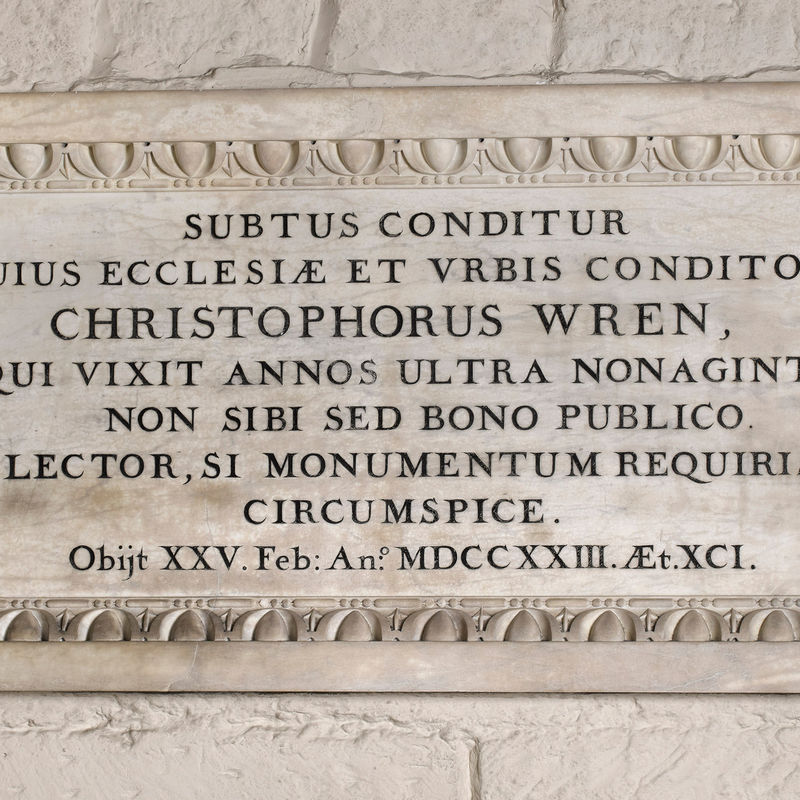

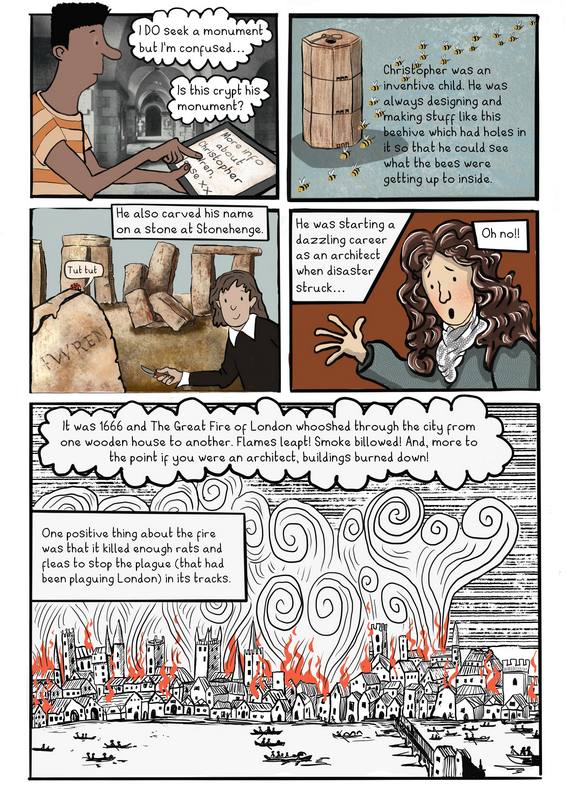

Credits
Written and illustrated by Sue Wallace
Narrator: Ingó Arason
Winston Churchill: Tom Frere
Video editing and sound design: Esme Wallace
The artwork includes images based on the following photographs:
- The crypt pf St Paul’s cathedral by Freeman Dovaston, from Views of St Paul’s Cathedral, c. 1900
- St Paul’s Cathedral by Aaron Gilmore
- St Paul’s Cathedral by KaLisa Veer
Transcript
Below the cathedral in the cool, quiet crypt.
This is a disappointingly small monument. It’s written in Latin. Can you guess what any of the words mean? Fortunately I happen to have a translation app about my person. Let me see…”
‘Below here is laid Christopher Wren, who laid out this church and city and who lived for more than ninety years, not for himself but for the public good. Reader, if you seek his monument, look around you. He died 25th of February 1723. Aged 91.’
I do seek a monument but I’m confused… Is this crypt his monument? More information about Christopher Wren, please.
Christopher Wren was an inventive child. He was always designing stuff like this beehive, which had holes in it so that he could see what the bees were getting up to inside.
He also carved his name on a stone at Stonehenge.
“Tut tut!”
He was starting a dazzling career as an architect, when disaster struck…
“Oh no!!”
It was 1666 and the Great Fire of London whooshed through the city from one wooden house to another. Flames leapt! Smoke billowed! And, more to the point if you were an architect, buildings burned down!
One positive thing about the fire was that it killed enough rats and fleas to stop the plague that had been plaguing London.
“My home has gone!”
“Run for your life!”
“Flee!”
“Fleas!!”
“Help us!”
“Help!”
The Great Fire of London lasted for four days. It destroyed almost half of the buildings in the city. Over 13,000 houses and 87 churches were burned to the ground. What the city needed was a talented, and yet modest, architect to do a spot of rebuilding.
Christopher Wren stepped forward!
Hooray!
He created designs for around fifty new churches and lots of other beautiful buildings. He also built a monument to the Great Fire of London.
But the building he’s most famous for is St Paul’s Cathedral. Wren said it was his masterpiece. Loads of state ceremonies and important religious services are held in it every year. And the dome is really amazing! Imagine the reaction when it was first unveiled. People were wowed!
“Wow”
“I’ve never seen anything like it in my life!”
There’s one more thing I need to tell you about St Paul’s Cathedral. During World War Two when London was being bombed, Prime Minister Winston Churchill realised how important it was to protect Wren’s masterpiece.
“St Paul’s must not be destroyed. We will never surrender!”
“During the Blitz (a bombing campaign by the Germans) a photographer called Herbert Mason was on fire patrol up on the roof of the newspaper offices where he worked. He saw St Paul’s enveloped in smoke and flames and rushed to get his camera.
His photograph helped to make Wren’s cathedral iconic. When an object or person is iconic it means they’re a symbol of something special. So, St Paul’s became a symbol of the nation’s resilience and determination.
Christopher Wren’s cathedral rose from the destruction of the great Fire of London and survived the great fires in London caused by the bombs of the Blitz.
Remember how Wren’s plaque said, ‘if you seek his memorial, look around you’. Where do you think you should look?
- Just in the crypt where he is buried?
- Around all of St Paul’s Cathedral?
- In the rest of London as well as St Paul’s?
- Or do you think it means something else?
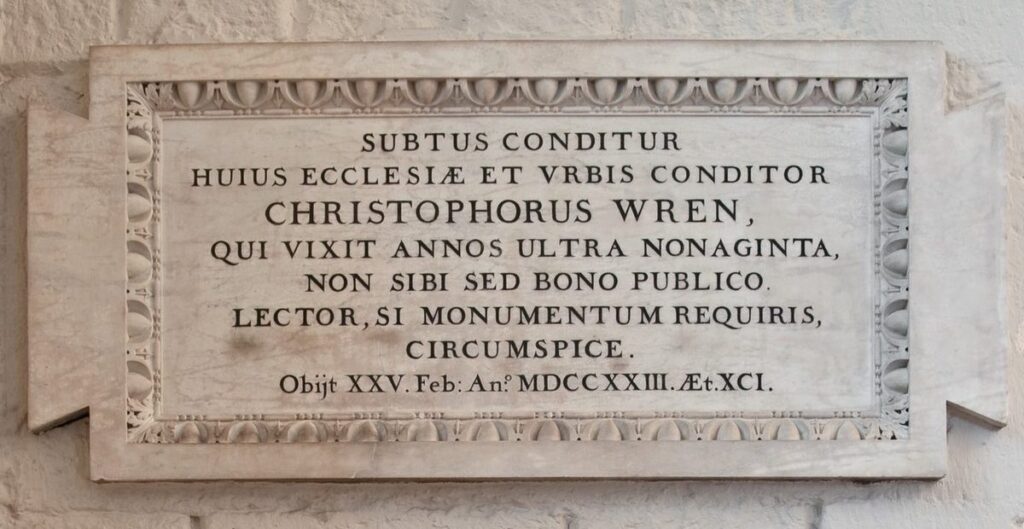
About Sue Wallace
Sue Wallace is a children’s book illustrator, writer, artist and teacher. The focus for her work is the layering of time and personal experience, along with a fascination with the process of opening up information and making it accessible and fun. Her current book takes you on a tour of the ancient city of York, interweaving fascinating and entertaining stories and illustrations of its history, buildings and objects.
About the Monument
The discreet plaque dedicated to Sir Christopher Wren (1632–1723) at St Paul’s Cathedral is tucked into an alcove in the crypt, emphasising its appeal to its readers to look around them for Wren’s true monument. It is attributed to the architect Robert Mylne (1733–1811), who held the post of Surveyor of the Fabric of St Paul’s from 1766 to his death, and who incidentally has his own memorial in the cathedral. As indicated in the translation as ‘is laid’/’laid out’ in Sue’s wonderful graphic, the inscription includes a play on words in the Latin between ‘conditur’ (in this context meaning ‘is buried’) and ‘conditor’ (meaning the founder, builder, constructor).
